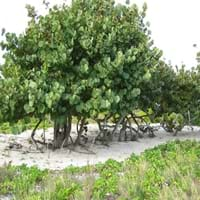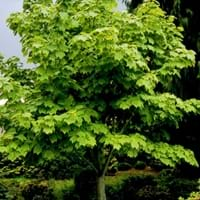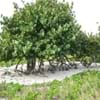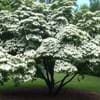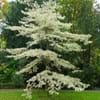Life Span
Perennial
Perennial
Origin
Southeastern United States, Caribbean, Central America, South America
Northeastern United States, Mid-Atlantic United States, Southeastern United States, Canada
Types
Not Available
Not Available
Habitat
Rocky coastal hummocks, sand dunes
moist forests, Slopes
USDA Hardiness Zone
9-15
3-7
Sunset Zone
H2, 24
Not Available
Habit
Oval or Rounded
Upright/Erect
Flower Color
White
Yellow, Yellow green
Flower Color Modifier
Bicolor
Bicolor
Fruit Color
Red, Purple, Yellow green
Green, Brown
Leaf Color in Spring
Red, Olive, Bronze
Light Green
Leaf Color in Summer
Red, Olive
Green
Leaf Color in Fall
Red, Olive, Bronze
Yellow
Leaf Color in Winter
Red, Olive, Bronze
Not Available
Leaf Shape
Round
Maple shaped
Plant Season
Spring, Summer, Fall, Winter
Not Available
Sunlight
Full Sun, Partial Sun
Partial Sun, Partial shade
Type of Soil
Loam, Sand
Loam
The pH of Soil
Neutral, Alkaline
Acidic, Neutral
Soil Drainage
Well drained
Well drained
Bloom Time
Spring, Late Spring, Early Summer, Summer, Late Summer, Early Fall
Early Spring, Spring
Tolerances
Pollution, Drought, Salt, Soil Compaction
Not Available
Where to Plant?
Ground
Ground
How to Plant?
Seedlings
Layering, Seedlings, Stem Cutting
Plant Maintenance
Medium
Medium
Watering Requirements
Average Water Needs, Do Not over Water
Requires regular watering
In Summer
Lots of watering
Lots of watering
In Spring
Moderate
Moderate
In Winter
Average Water
Average Water
Soil pH
Neutral, Alkaline
Acidic, Neutral
Soil Type
Loam, Sand
Loam
Soil Drainage Capacity
Well drained
Well drained
Sun Exposure
Full Sun, Partial Sun
Partial Sun, Partial shade
Pruning
Remove dead branches
Prune if you want to improve plant shape
Fertilizers
6-6-6 or 8-8-8
All-Purpose Liquid Fertilizer
Pests and Diseases
Fungal Diseases
Anthracnose, Bacterial leaf scorch, Bleeding canker, Decline, Fomes root rot, Ganoderma root rot, Laetiporus root rot, Leaf spot, Powdery mildew, Red blotch, Tar spot, Verticillium Wilt
Plant Tolerance
Drought
Drought
Flowers
Insignificant
Insignificant
Flower Petal Number
Not Available
Single
Foliage Texture
Bold
Coarse
Foliage Sheen
Glossy
Matte
Attracts
Birds
Not Available
Allergy
Pollen
Asthma, Runny nose, Skin irritation
Aesthetic Uses
Ground Cover
Showy Purposes
Beauty Benefits
Good for skin, Makes Hair Silkier
Not Available
Environmental Uses
Protects from storm-induced erosion
Air purification
Medicinal Uses
Diaphoretic, Diuretic, Febrifuge, Tonic
Antirheumatic, Cold, Cough, Emetic, gonorrhoea, Kidney problems, Pectoral, Swelling, Vomiting
Part of Plant Used
Bark, Fruits, Leaves
Leaves, Sap
Other Uses
Jam
Used as Ornamental plant, Used as preservative
Used As Indoor Plant
No
No
Used As Outdoor Plant
Yes
Yes
Garden Design
Container, Edible, Feature Plant, Fruit / Fruit Tree, Hedges, Screening / Wind Break, Shade Trees, Street Trees, Topiary / Bonsai / Espalier, Tropical
Feature Plant
Botanical Name
COCCOLOBA uvifera
ACER pensylvanicum
Common Name
Sea Grape
Moosewood, striped maple, moose maple
In Hindi
सागर अंगूर
धारीदार मेपल
In German
Sea Grape
gestreifte Ahorn
In French
Sea Grape
érable rayé
In Spanish
Sea Grape
arce rayado
In Greek
Sea σταφυλιών
ριγέ σφενδάμου
In Portuguese
Sea Grape
plátano listrada
In Polish
Sea Grape
paski klonu
In Latin
Uva mare
alba acernis
Phylum
Magnoliophyta
Magnoliophyta
Class
Magnoliopsida
Magnoliopsida
Order
Caryophyllales
Sapindales
Family
Polygonaceae
Aceraceae
Clade
Angiosperms, Core eudicots, Eudicots
Angiosperms, Eudicots, Rosids
Tribe
Coccolobeae
Not Available
Subfamily
Eriogonoideae
Not Available
Number of Species
Not Available
Not Available
Season and Care of Sea Grape and Moosewood Tree
Season and care of Sea Grape and Moosewood Tree is important to know. While considering everything about Sea Grape and Moosewood Tree Care, growing season is an essential factor. Sea Grape season is Spring, Summer, Fall and Winter and Moosewood Tree season is Spring, Summer, Fall and Winter. The type of soil for Sea Grape is Loam, Sand and for Moosewood Tree is Loam while the PH of soil for Sea Grape is Neutral, Alkaline and for Moosewood Tree is Acidic, Neutral.
Sea Grape and Moosewood Tree Physical Information
Sea Grape and Moosewood Tree physical information is very important for comparison. Sea Grape height is 610.00 cm and width 610.00 cm whereas Moosewood Tree height is 610.00 cm and width 460.00 cm. The color specification of Sea Grape and Moosewood Tree are as follows:
Sea Grape flower color: White
Sea Grape leaf color: Red, Olive and Bronze
Moosewood Tree flower color: Yellow and Yellow green
- Moosewood Tree leaf color: Light Green
Care of Sea Grape and Moosewood Tree
Care of Sea Grape and Moosewood Tree include pruning, fertilizers, watering etc. Sea Grape pruning is done Remove dead branches and Moosewood Tree pruning is done Prune if you want to improve plant shape. In summer Sea Grape needs Lots of watering and in winter, it needs Average Water. Whereas, in summer Moosewood Tree needs Lots of watering and in winter, it needs Average Water.
